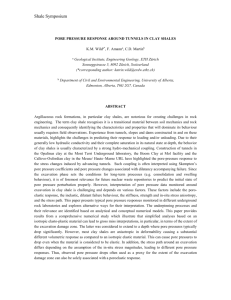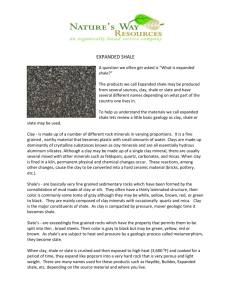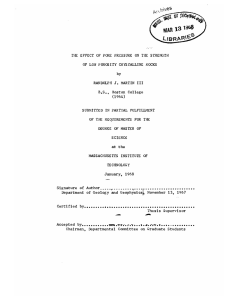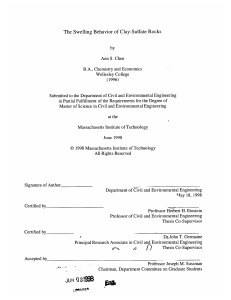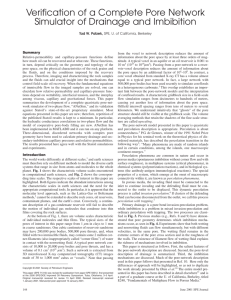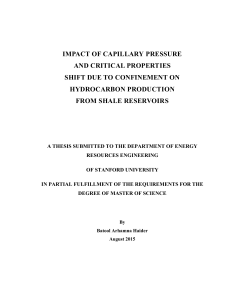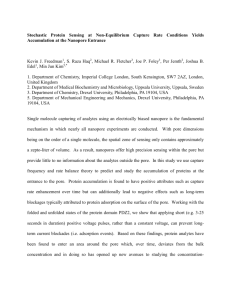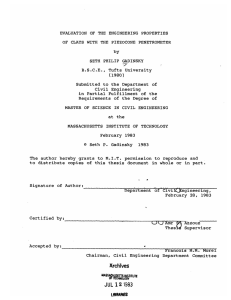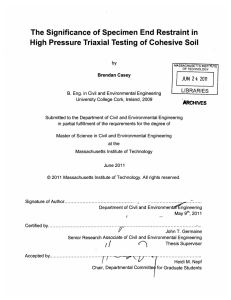The role of capillary suction and dilatancy on the interpretation of the
advertisement
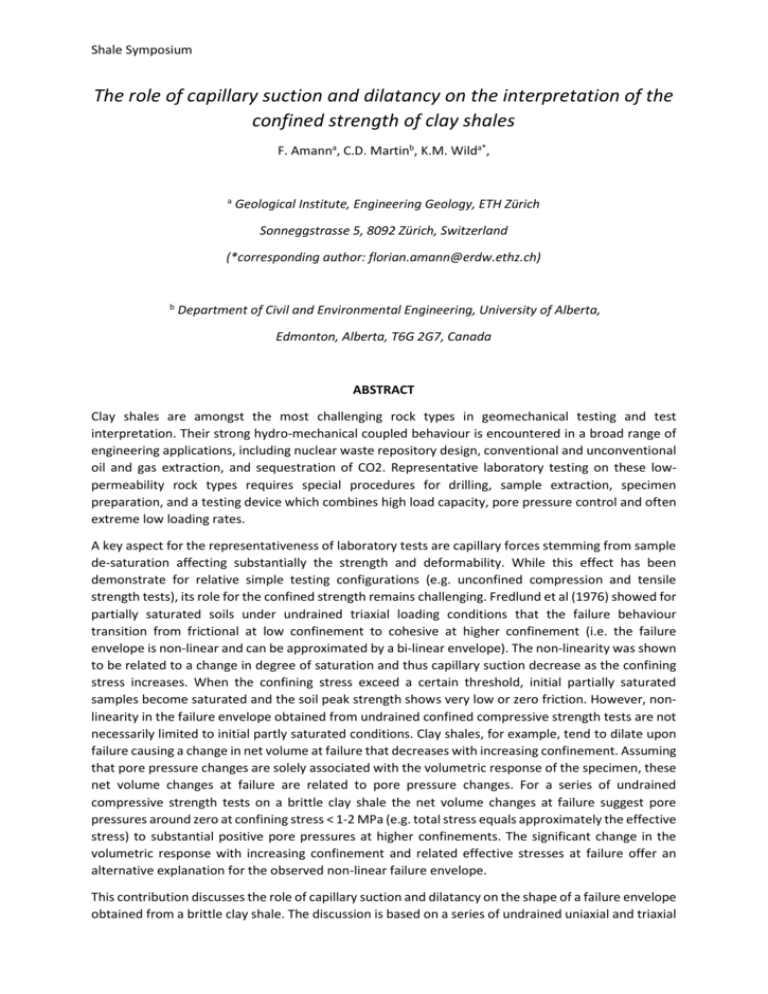
Shale Symposium The role of capillary suction and dilatancy on the interpretation of the confined strength of clay shales F. Amanna, C.D. Martinb, K.M. Wilda*, a Geological Institute, Engineering Geology, ETH Zürich Sonneggstrasse 5, 8092 Zürich, Switzerland (*corresponding author: florian.amann@erdw.ethz.ch) b Department of Civil and Environmental Engineering, University of Alberta, Edmonton, Alberta, T6G 2G7, Canada ABSTRACT Clay shales are amongst the most challenging rock types in geomechanical testing and test interpretation. Their strong hydro-mechanical coupled behaviour is encountered in a broad range of engineering applications, including nuclear waste repository design, conventional and unconventional oil and gas extraction, and sequestration of CO2. Representative laboratory testing on these lowpermeability rock types requires special procedures for drilling, sample extraction, specimen preparation, and a testing device which combines high load capacity, pore pressure control and often extreme low loading rates. A key aspect for the representativeness of laboratory tests are capillary forces stemming from sample de-saturation affecting substantially the strength and deformability. While this effect has been demonstrate for relative simple testing configurations (e.g. unconfined compression and tensile strength tests), its role for the confined strength remains challenging. Fredlund et al (1976) showed for partially saturated soils under undrained triaxial loading conditions that the failure behaviour transition from frictional at low confinement to cohesive at higher confinement (i.e. the failure envelope is non-linear and can be approximated by a bi-linear envelope). The non-linearity was shown to be related to a change in degree of saturation and thus capillary suction decrease as the confining stress increases. When the confining stress exceed a certain threshold, initial partially saturated samples become saturated and the soil peak strength shows very low or zero friction. However, nonlinearity in the failure envelope obtained from undrained confined compressive strength tests are not necessarily limited to initial partly saturated conditions. Clay shales, for example, tend to dilate upon failure causing a change in net volume at failure that decreases with increasing confinement. Assuming that pore pressure changes are solely associated with the volumetric response of the specimen, these net volume changes at failure are related to pore pressure changes. For a series of undrained compressive strength tests on a brittle clay shale the net volume changes at failure suggest pore pressures around zero at confining stress < 1-2 MPa (e.g. total stress equals approximately the effective stress) to substantial positive pore pressures at higher confinements. The significant change in the volumetric response with increasing confinement and related effective stresses at failure offer an alternative explanation for the observed non-linear failure envelope. This contribution discusses the role of capillary suction and dilatancy on the shape of a failure envelope obtained from a brittle clay shale. The discussion is based on a series of undrained uniaxial and triaxial Shale Symposium test results. Pore pressure measurements obtained during undrained loading conditions suggest that the strength resistance at low confining stresses is a consequence of dilatancy, which is suppressed when the confining stress is increased. The results will show that for clay shale that can be classed as weak rocks (ISRM Class R2 and R3) the strength envelope cannot be interpreted without pore pressure measurements.
